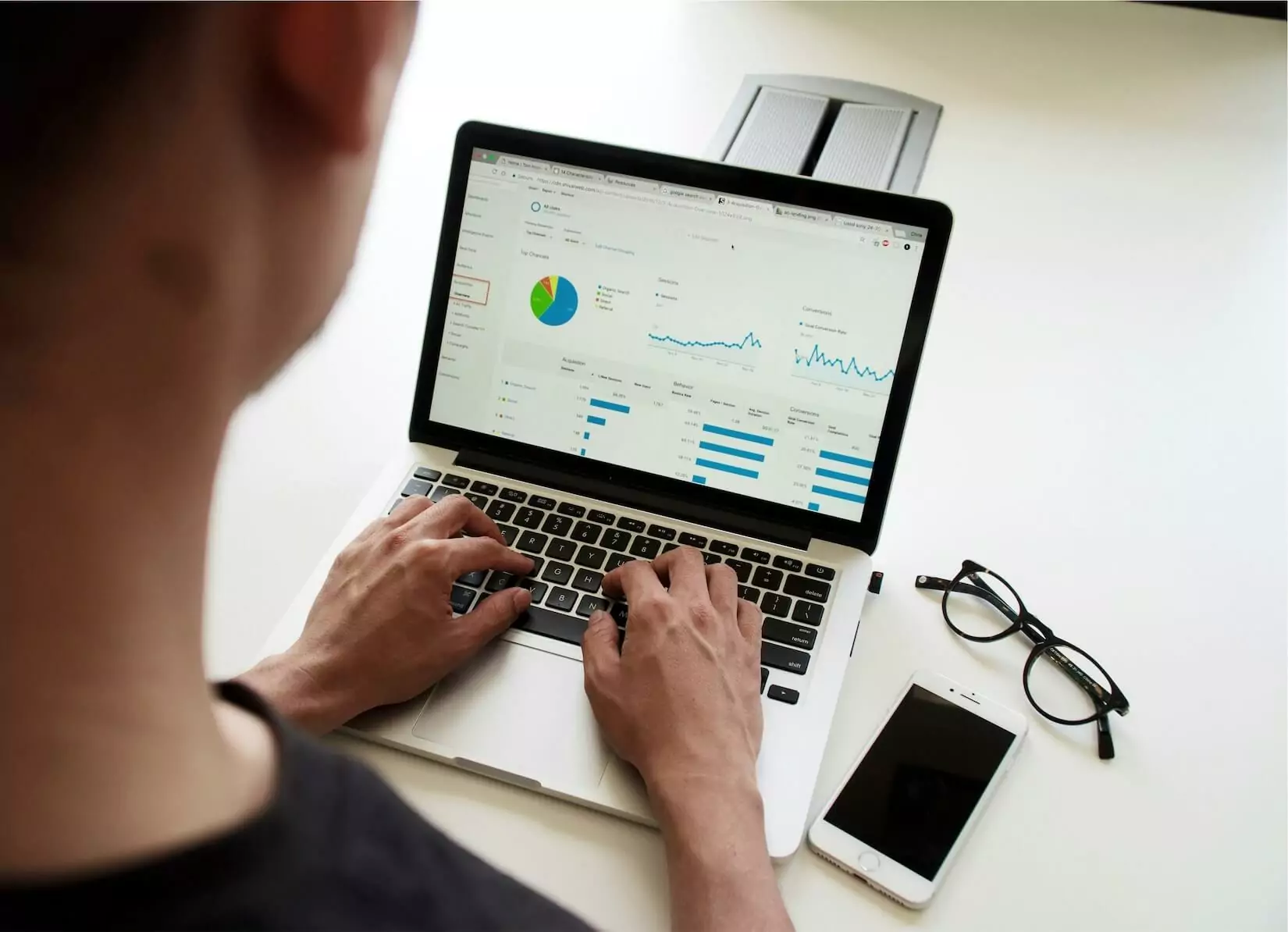What Is Big Data?
The term “big data” may confuse some. It can mean many things. And that’s fitting considering so many businesses, nonprofit organizations, and government agencies want to use it for their benefit.
However, when you take a closer look at big data, it’s essentially large data sets that require a scalable infrastructure to organize and analyze. If you’re looking for a numerical representation, many have defined big data as data that exceeds one petabyte (one million gigabytes).
Considering the sheer size of this data, it’s no mystery why companies need concrete data analytics teams in place to handle that data. Without that sort of infrastructure, things can quickly get lost in the shuffle.
This blog discusses big data in detail and examines its “Vs”- volume, velocity, variety, veracity, variability, visualization, and value. Understanding these seven core components of big data will equip your business with the tools it needs to succeed when trying to use big data to your advantage.
Fully Accountable is here for all of your big data needs. Our outsourced financial management utilizes the correct business intelligence metrics to deliver you actionable insights in a manner that makes sense. Big data should not be something you run from. With Fully Accountable, we make sure that you embrace big data’s complexity and use it to your advantage.
What Is Big Data?
The term ”big data” refers to massive amounts of complex structured and unstructured data generated quickly by multiple sources. The sources that generate big data are devices such as smartphones, laptops, tablets, social media posts, and any sensors on websites such as fit meters and electronic health records.
This data is rife with opportunities for companies to learn more about their markets and customers and adapt their business to better suit the customer’s needs. Using big data, healthcare providers can identify at-risk populations. Police stations can predict where crime will occur before it happens. Retailers can optimize their supply chains and forecast their inventories with improved accuracy. The applications are never-ending.
However, to extract meaning from this often unstructured data, companies need qualified data analysts who understand how to extract, clean, interpret, and present the data to company decision-makers. These data scientists aren’t easily found.
The Three Vs of Big Data
To illustrate big data’s definition and purpose, it’s critical to understand the three Vs of big data: volume velocity and variety. Analyst Doug Laney coined these terms in 2001.
Volume
With every passing year, data accumulates at an exponential rate. In fact, by 2025, the digital universe will reach over 175 zettabytes. When was the last time you heard the word “zetta” used as a numerical representation? That’s 180 with 21 zeros after it.
You might mistakenly assume the problem with that much data is finding ways to store it. However, the real issue comes from organizing that data into usable sets that analysts can understand. The challenge will be for data analysts to decide where to pull relevant data and the best way to use it.
Velocity
The ever-expanding internet creates data at lightning speed. Google receives 3.8 million search queries every minute. 156 million messages to and from users, and Facebook frequenters upload 243,000 photos. Again, the challenge is for data scientists to find ways to collect the data, interpret it, and present it in a way that makes sense. That’s not easy when data sets change at such a rapid pace.
Variety
Data comes in many forms. Structured data refers to a data type neatly organized within database columns. Data analysts love this type of data because it’s easy to enter, store, query, and analyze. Unstructured data is challenging to organize and analyze. Data such as emails, social media posts, and word processing documents can be scattered and require administrative hours sorting.
The Four, Newer Vs of Big Data
More recently, industry leaders and pundits have created four more Vs related to big data analytics. These four Vs consist of veracity, variability, visualization, and value.
Veracity
Veracity examines the collected data’s quality. Analysts can’t correctly interpret data that doesn’t have the correct source data. As businesses automate more of their operations and computers make vital decisions, they need to trust their data sources. If they can’t, they put their whole organization at risk.
Variability
Another challenge for automation and business intelligence (BI) is deciphering contextual meaning from human complexities such as language. Our words and phrases often have multiple meanings depending on the context. Part of the data scientist’s current struggle is creating software that accounts for this complexity.
Visualization
Data has to be understandable to decision-makers for it to be valuable. Simplifying complex data with various graphs helps companies better understand the strategies they need to adopt to create meaningful change with data.
Value
Big data has no use if it doesn’t bring tangible value to an industry or organization. A Mckinsey article discussed big data’s impact, positing that big data could account for a 300 billion dollar reduction in health care spending. That’s 12-17% of the US’s baseline healthcare costs.
How Do Companies Use Big Data?
With the amount of data and its various properties, it’s no secret why big data analysis is inherently complex. Its complexity demonstrates the need for equally complex and intuitive systems to ease the strain on data analysts.
Big data requires a unique NoSQL database to be stored without adhering to specific models. This flexibility is crucial to analyzing what may seem like conflicting information sources. It gives analysts the complete perspective and helps them decide what data is useful and what to discard.
Operational Data Vs. Analytical Data
When analysts collect, analyze, and process big data, they classify the data in one of two ways: operational or analytical. Operational systems distribute large swaths of data across multiple servers, and it includes customer data such as inventory, customer behavior, and purchase information.
Analytical is much more complex to organize. These systems analyze complex data and provide companies with the tools to make tough decisions. They often integrate with other infrastructural aspects and maximize the collection and use of data.
Big data can be used in a wide range of industries. The following examples are just a few examples of how big data impacts businesses such as enhancing research, business forecasting, targeting key audiences with advertising, and understanding consumer behavior. In the following industries, the big data revolution is already well underway.
Finance
The finance industry has numerous applications for big data. Companies can use big data to bolster fraud detection, analyze risk, enhance brokerage services, run financial audits, and utilize blockchain technology.
Fractionalized CFOs and outsourced accounting services can also utilize big data to offer companies enhanced business intelligence and give companies across multiple industries access to valuable advice rooted in data analytics. Big data offers more secure and personalized financial services.
Healthcare
Big data has many applications in place to advance healthcare systems. With increased access to patient data, doctors and healthcare providers can tailor treatments and improve research on diseases such as Alzheimer’s. They can also develop new drugs and foster critical insights into population patterns with health.
Media and Entertainment
Media and entertainment might be the most obvious example of big data at work. If you’ve ever watched Netflix or Hulu, you’ve contributed your data to the data analysts at the streaming platform’s headquarters.
Believe it or not, every time you watch a movie or listen to music on Spotify, algorithms analyze your habits to try and improve their services. Netflix even analyzes data on graphics, word choice, and colors to help make their business decisions.
Agriculture
In agriculture, you can find applications for big data in predictive analyses about crop yields and engineering seeds to adapt to specific clients and seasons. Groups such as the Global Open Data for Agriculture and Nutrition promote unrestricted access to global nutrition and agricultural data to end world hunger.
Conclusion- What Is Big Data?
Big data is the most useful tool for data-based decision making in business today. As the amount of data increases, these data scientists must create more innovative ways to analyze unstructured data. The three Vs represent the pillars of this effort. They display how analysts should approach big data in the future.
Analysts must bear in mind where they receive their data, the amount of data they receive, and the quality of their data in relation to the problems they are trying to solve. They must also consider how they represent the data to their organization’s decision makers. Raw data that’s unstructured is virtually useless.
At Fully Accountable, we believe everyone should have access to business intelligence that improves their bottom line and increases their chances of success. Our certified accountants and financial analysts understand how to take big data and turn it into actionable advice.
Contact us today to see how big data analytics can take your business to new heights.
Heidi Cake is our Data Director. She studied at Indiana Wesleyan University with a degree in BS Strategic Communications and BS Leadership Studies and specializes in analyzing anything in her path and creating aesthetic appeal to visual documents.
Heidi spent the first few years after college working in the non-profit sector on teams where she was handed anything that needed to be communicated creatively. She realized her most loved being able to communicate complex, abstract ideas which made her return to her love of numbers and data. Heidi brings an equally creative and analytical mind to the task of analyzing and communicating client data and statistics.





